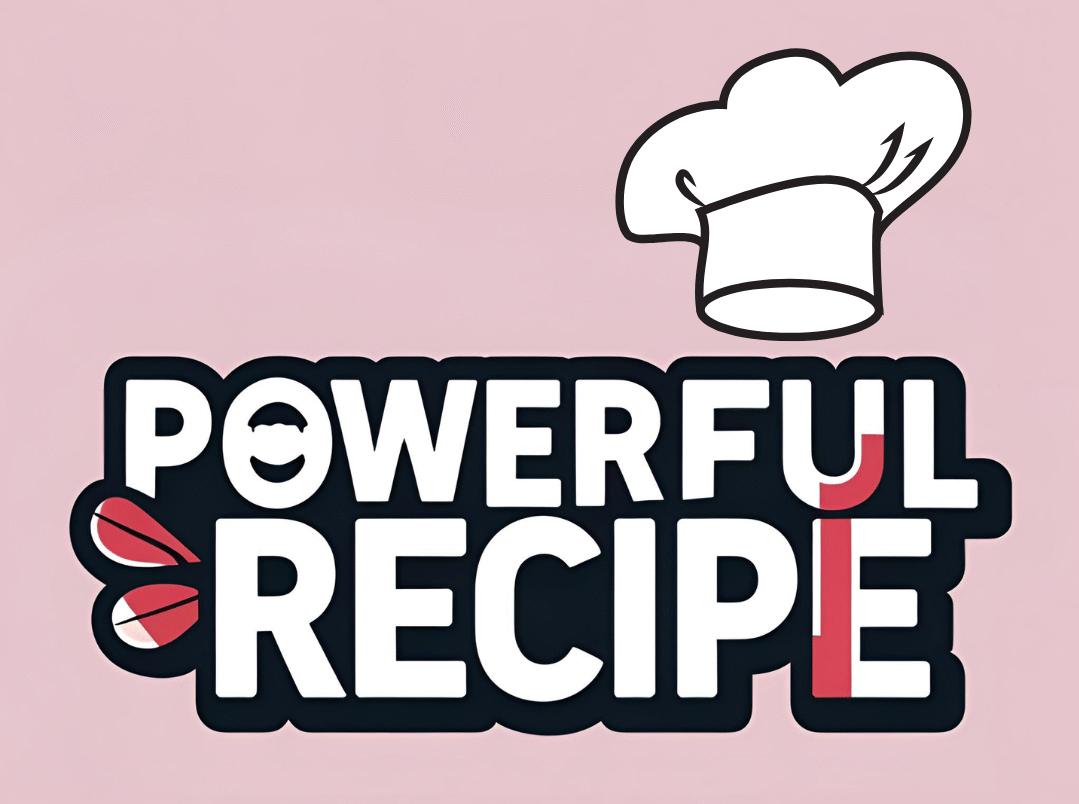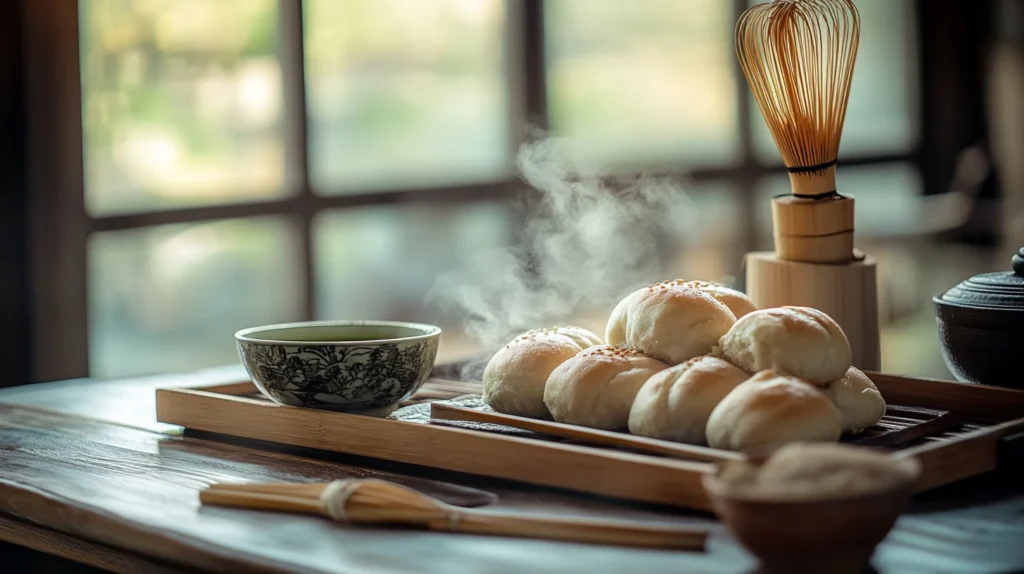
If you’ve ever strolled past a Japanese bakery and caught a whiff of something warm, slightly sweet, and unmistakably earthy, chances are you’ve encountered Matcha Pan. This delightful treat is more than just a green-hued bun—it’s a cultural fusion of traditional Japanese flavors with Western baking techniques, creating something truly unique and irresistible.
But what exactly is Matcha Pan? The term “pan” is derived from the Portuguese word for bread, introduced to Japan in the 16th century. Since then, Japan has created an entire universe of baked goods, often incorporating local flavors. Among these, matcha (powdered green tea) stands out as a favorite, cherished for both its taste and its health benefits.
Matcha Pan combines these two elements—soft, pillowy bread and the bittersweet richness of matcha—to produce a bakery favorite that’s gaining global attention. From Japanese schoolchildren enjoying it as an afternoon snack, to food bloggers across the globe sharing recipes and photos, Matcha Pan is more than just a trend—it’s an experience.
In this comprehensive guide, we’ll dive into everything you need to know about Matcha Pan—from its origins and nutritional value to how to bake your own at home. Whether you’re a seasoned baker or someone new to Japanese sweets, this article will give you a deep appreciation for one of Japan’s most iconic baked goods.
The Origins of Matcha and Japanese Bread Culture
To fully appreciate Matcha Pan, we need to travel back in time—centuries, in fact. Matcha has long been embedded in Japanese culture. Derived from finely ground shade-grown tea leaves, it was originally used in Zen Buddhist rituals before finding its place in the broader Japanese tea ceremony. Its vibrant green hue, grassy aroma, and slightly bitter flavor made it a cherished ingredient beyond the teacup.
On the other hand, bread (pan) was introduced much later. Portuguese missionaries first brought bread to Japan in the 1540s. While initially slow to catch on, Japan’s exposure to Western culinary practices dramatically increased during the Meiji era (1868–1912), when bread became more integrated into daily life. Over time, the Japanese didn’t just adopt bread—they transformed it.
The result? Soft, fluffy breads known for their unique texture and mild sweetness, a far cry from crusty European loaves. As Japanese bakers became more experimental, they began incorporating local ingredients—like red bean paste, sesame, and of course, matcha—into their baked creations.
Matcha Pan was born from this fusion. The mild bitterness of matcha offsets the sweetness of Japanese pan, making it ideal for both sweet and savory fillings. It’s a perfect example of Japan’s culinary adaptability, blending tradition with innovation to produce something completely new yet deeply familiar.
For fans of fusion food, don’t miss the dessert hybrid: Pistachio Kunafa Brownies—Middle Eastern crisp meets fudgy indulgence.
What Makes Matcha Pan Unique?
When it comes to Japanese baked goods, Matcha Pan stands out in both flavor and aesthetics. It’s not just a regular bread with some green coloring—it’s a carefully crafted product that embodies the subtle complexities of matcha and the artistry of Japanese baking.
Taste, Texture, and Color – A Sensory Delight
Matcha Pan offers a unique sensory experience. The first thing you’ll notice is the vivid green hue, thanks to the high-quality matcha powder used in the dough. This natural color signals the presence of real, antioxidant-rich green tea and sets it apart from artificially colored bakery products.
In terms of taste, Matcha Pan strikes a beautiful balance. The earthy bitterness of matcha is mellowed by the mild sweetness of the dough, creating a harmonious flavor profile that’s both complex and comforting. It’s not overly sweet, making it suitable for all ages and times of day—from breakfast to late-night snack.
The texture is another highlight. Japanese pan is known for being incredibly soft, fluffy, and slightly chewy, and Matcha Pan is no exception. The kneading process and specific flour types used contribute to a cloud-like mouthfeel that contrasts wonderfully with any fillings or toppings.
Aroma – The Signature Scent of Matcha
One of the most enchanting aspects of Matcha Pan is its distinctive aroma. As it bakes, the kitchen fills with a warm, sweet scent layered with the earthy fragrance of green tea. It’s a sensory preview of what’s to come and adds to the entire experience of enjoying this bread.
Fresh out of the oven, Matcha Pan smells like a walk through a Kyoto tea garden on a sunny morning—comforting, rich, and subtly invigorating.
Visual Appeal – A Treat for the Eyes
In Japanese cuisine, visual presentation is almost as important as taste. Matcha Pan adheres to this philosophy with its vibrant green color, often contrasted with additions like white sesame seeds, golden crusts, or even powdered sugar.
Some variations feature beautiful patterns on the crust, swirls of matcha filling, or colorful toppings like red bean paste (anko), chestnuts, or mochi. This makes Matcha Pan not just a food but an aesthetic experience, perfect for sharing on social media or serving to guests.
Health Benefits – Matcha’s Nutritional Edge
One often-overlooked benefit of Matcha Pan is the health boost from its star ingredient. Matcha is rich in:
- Catechins (especially EGCG) – powerful antioxidants known for fighting inflammation.
- L-Theanine – an amino acid that promotes relaxation without drowsiness.
- Chlorophyll – which helps detoxify the body.
- Caffeine – present in lower amounts than coffee, offering gentle energy without jitters.
Although Matcha Pan is still a baked good and should be consumed in moderation, the inclusion of matcha gives it a nutritional edge over regular sweet breads.
Curious about matcha’s wellness cousin? Try Italian Penicillin Soup—a broth-based comfort that’s loaded with benefits.
Cultural Symbolism – More Than Just Bread
Finally, Matcha Pan is not just food—it’s a cultural symbol. In Japan, the fusion of matcha and bread represents the harmonious blend of old and new, East and West. It’s a testament to how Japanese cuisine continues to evolve while staying rooted in tradition.
From its humble beginnings to its rise in gourmet bakeries worldwide, Matcha Pan is a true icon of culinary creativity, and it continues to win hearts and taste buds across the globe.
Ingredients Used in Matcha Pan
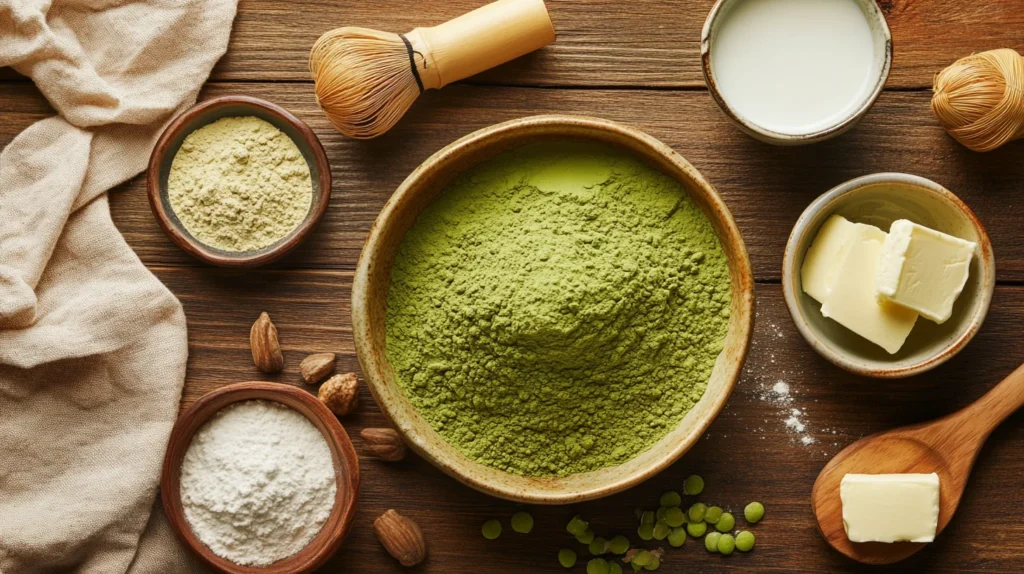
To truly understand and appreciate the magic behind Matcha Pan, it’s essential to explore its core ingredients. Each component plays a crucial role in shaping the bread’s texture, flavor, and color. While the recipe can be customized, the basic formula is a thoughtful balance between traditional baking ingredients and high-quality matcha.
Matcha Powder – The Heart of the Bread
Matcha is the defining ingredient of Matcha Pan. However, not all matcha is created equal. When baking, it’s important to select culinary-grade matcha powder. Unlike ceremonial-grade matcha, which is used for tea ceremonies, culinary-grade matcha is more robust, designed to hold its flavor even after baking.
Important qualities to look for in good matcha powder:
- Vibrant green color – a sign of freshness and quality.
- Fine texture – for even blending.
- Earthy aroma – indicates proper storage and quality leaves.
Using low-grade matcha may result in a dull, brownish color and a bitter aftertaste. For the best results, always source your matcha from reputable Japanese suppliers or specialty stores.
Flour – The Foundation of Fluffiness
Most Matcha Pan recipes call for bread flour due to its high protein content. This enables better gluten development, leading to the signature fluffiness and elasticity that defines Japanese pan.
Some recipes may blend bread flour with cake flour to create a softer crumb, depending on personal preference. For an extra-tender texture, Japanese recipes often include tangzhong—a pre-cooked flour paste that retains moisture in the dough, giving it a pillowy softness that lasts for days.
Yeast – The Rising Agent
Active dry yeast or instant yeast is used to leaven the dough, helping it rise and develop air pockets. Japanese-style breads are known for their light texture, which comes from careful kneading, resting, and rising processes.
Yeast not only affects the structure but also contributes subtle fermentation flavors that complement the matcha.
Sugar and Salt – Balancing the Flavor
Sugar serves multiple purposes in Matcha Pan. It:
- Adds mild sweetness.
- Feeds the yeast for fermentation.
- Helps create a golden-brown crust.
Salt, while used sparingly, enhances the overall flavor and strengthens the dough by tightening the gluten strands. The key is balance—too much sugar or salt can overpower the delicate matcha notes.
Butter and Milk – For Richness and Moisture
The addition of butter (or sometimes heavy cream) and whole milk gives the dough its rich, tender crumb. These fats also help with browning and flavor development during baking.
In vegan versions, alternatives like coconut oil or oat milk can be used, but they may slightly alter the texture and flavor.
Optional Fillings – Taking It to the Next Level
Many Matcha Pan varieties include delicious fillings that enhance the overall experience. Some popular options include:
- Sweet red bean paste (anko) – for a traditional Japanese twist.
- Custard or cream cheese – for a creamy contrast.
- White chocolate or mochi – for modern fusion flavors.
These fillings are usually added before shaping the dough into buns, giving each bite a delightful surprise.
Toppings and Finishes
To complete the look and flavor of Matcha Pan, bakers often use:
- Powdered sugar dusting – a sweet, snowy topping.
- Black or white sesame seeds – for nuttiness and texture.
- Crumb crust (as in melon pan) – for a crisp, sugary shell.
These small touches elevate Matcha Pan from simple bread to a multi-layered culinary treat.
How to Make Traditional Matcha Pan at Home
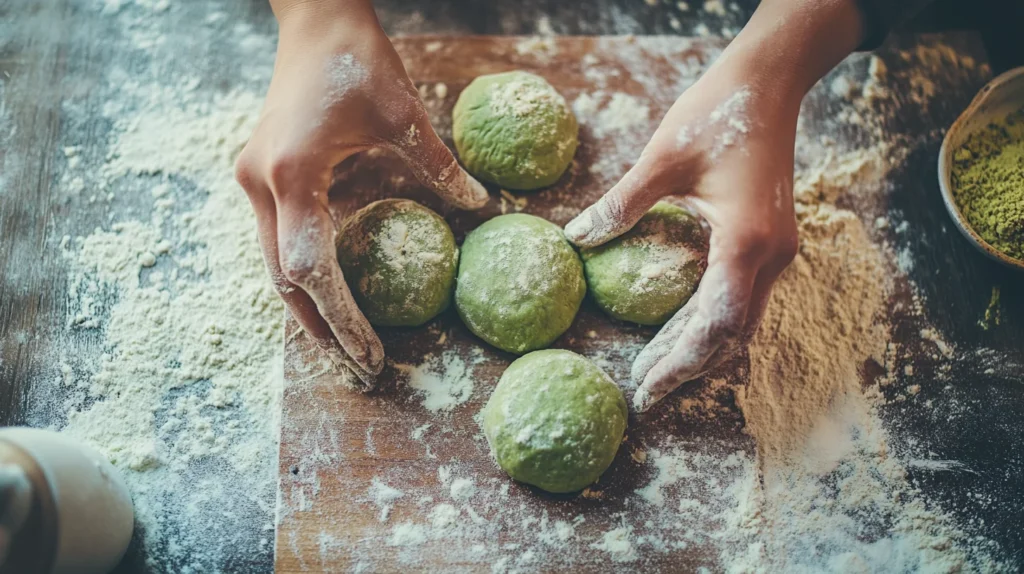
Making Matcha Pan at home is a rewarding experience. Not only do you get to enjoy the aromatic pleasure of fresh bread baking in your kitchen, but you also gain complete control over the ingredients, sweetness level, and optional fillings. Whether you’re a seasoned home baker or trying something new, this step-by-step guide will walk you through the entire process of creating authentic, bakery-style Matcha Pan from scratch.
Equipment Needed
Before diving into the ingredients and method, ensure you have the following tools:
- Large mixing bowls
- Digital kitchen scale (for accuracy)
- Stand mixer with a dough hook (optional but recommended)
- Dough scraper
- Plastic wrap or clean kitchen towel
- Baking sheet lined with parchment paper
- Oven with proofing setting or a warm space for rising
- Pastry brush (for optional egg wash)
Ingredients for Basic Matcha Pan (Makes ~8 Buns)
For the Dough:
- 250g bread flour
- 2 tbsp matcha powder (culinary grade)
- 40g sugar
- 1 tsp salt
- 5g instant yeast
- 180ml whole milk (warm, around 35°C)
- 30g unsalted butter (softened)
Optional Fillings:
- 100g sweet red bean paste (anko)
- White chocolate chunks
- Cream cheese or custard
Optional Toppings:
- Sesame seeds
- Powdered sugar
- Crumb topping (like melon pan)
Step-by-Step Instructions
1. Mix Dry Ingredients
In a large bowl, whisk together the bread flour, matcha powder, sugar, and salt. This helps evenly distribute the matcha powder and avoid clumps.
2. Activate the Yeast
In a separate cup, warm the milk to around 35°C (95°F). Add the instant yeast and stir. Let it sit for 5 minutes until foamy. (If using active dry yeast, allow more time for activation.)
3. Combine Wet and Dry
Make a well in the center of the flour mixture. Pour in the yeast-milk mix. Stir with a spatula or use a stand mixer on low speed to form a shaggy dough.
4. Knead the Dough
Knead the dough by hand for 10–15 minutes or use a stand mixer with a dough hook for about 8 minutes. Once the dough becomes smooth and elastic, add the softened butter. Continue kneading until fully incorporated and the dough passes the “windowpane test” (a thin stretch of dough should not tear easily).
5. First Rise (Proofing)
Place the dough in a greased bowl, cover with plastic wrap, and let it rise in a warm place for 1 to 1.5 hours, or until doubled in size.
6. Divide and Shape
Punch down the risen dough. Divide it into 8 equal pieces using a scale for precision. Flatten each piece into a circle and add your desired filling. Pinch the dough closed and roll into a smooth ball.
7. Second Rise
Place the shaped buns on a parchment-lined baking sheet, spaced evenly. Cover lightly and let them rise again for 30–45 minutes, until puffy.
8. Preheat and Bake
Preheat your oven to 180°C (350°F). Brush the tops with a bit of milk or egg wash if you want a glossy finish. Bake for 15–18 minutes, or until lightly golden and set.
9. Cool and Enjoy
Allow the buns to cool slightly before serving. The interior should be soft and slightly chewy, with the warm, earthy flavor of matcha shining through.
Common Mistakes to Avoid
- Using low-quality matcha – results in dull color and bitter taste.
- Adding too much flour – makes the buns dry and dense.
- Under-kneading – leads to poor gluten development, affecting texture.
- Skipping the second rise – causes flat, underdeveloped buns.
- Overbaking – dries out the matcha, muting its flavor and aroma.
Customizing Your Matcha Pan
One of the joys of home baking is personalization. You can:
- Make a loaf instead of individual buns.
- Add a crumbly cookie crust for a Matcha Melon Pan.
- Swirl in cinnamon or vanilla for a fusion flavor.
- Use plant-based milk and butter for a vegan version.
With practice, you’ll discover the version of Matcha Pan that best fits your taste and style.
Explore more comforting textures in this warm and gooey classic: Cheesy Pepperoni Stromboli
Variations of Matcha Pan Across Japan
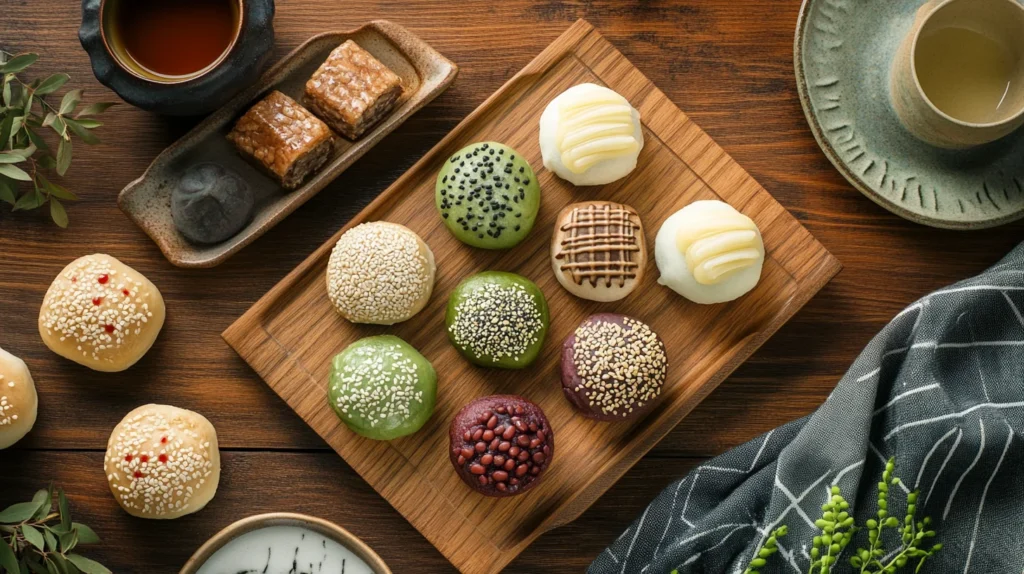
While the basic version of Matcha Pan—a soft, slightly sweet bun infused with green tea flavor—is widely loved, regional bakeries and home cooks across Japan have put their own unique spin on this treat. From Kyoto’s minimalist elegance to Hokkaido’s creamy indulgence, the variations of Matcha Pan reflect Japan’s rich culinary diversity and creativity.
Kyoto’s Classic Red Bean Matcha Pan
Kyoto, known as the spiritual home of matcha, features one of the most traditional versions of Matcha Pan. Here, it’s common to find buns filled with anko (sweet red bean paste) made from azuki beans. This combination is not only classic but also deeply rooted in Japanese wagashi (traditional sweets) culture.
The bitterness of the matcha is perfectly balanced by the natural sweetness of the red bean paste, making this version both nostalgic and satisfying. It’s often shaped into a small, round bun and enjoyed with a cup of matcha tea for a full sensory experience.
Hokkaido Cream-Filled Matcha Pan
Hokkaido, Japan’s northernmost island, is famous for its dairy products, especially milk and cream. Naturally, local bakers have incorporated these into Matcha Pan by filling it with fresh cream or custard.
These versions are:
- Richer and more indulgent, often resembling a dessert more than a snack.
- Sometimes made with Hokkaido milk bread dough, which is even softer and fluffier.
- Finished with a sprinkle of powdered sugar or a drizzle of matcha glaze.
This style is especially popular with younger audiences and tourists looking for a sweet twist on tradition.
Tokyo’s Modern Interpretations
In Tokyo, a city that thrives on innovation, Matcha Pan has undergone many contemporary transformations. Upscale bakeries and patisseries offer artisanal versions that:
- Feature swirled doughs combining matcha with chocolate or vanilla.
- Include mochi fillings, adding a chewy surprise inside.
- Are shaped like crescents, braids, or even rolls, breaking from the typical bun form.
- Use matcha-infused cookie crusts to create a Matcha Melon Pan hybrid.
Tokyo-style Matcha Pan is often designed to be Instagram-worthy, appealing to the modern foodie who wants both flavor and visual flair.
Okinawa’s Health-Focused Variations
In Okinawa, known for its health-conscious cuisine and longevity, you’ll find Matcha Pan that’s been adapted to focus more on nutrition and simplicity. These versions often:
- Use whole wheat or multi-grain flour for extra fiber.
- Include low sugar content and may use natural sweeteners like okinawan brown sugar (kokuto).
- Be paired with plant-based milk or coconut cream fillings for a lighter option.
This variation caters to those seeking healthier indulgences while still enjoying the earthy richness of matcha.
Matcha Pan Fusion – Global Influences in Japanese Bakeries
As Japan becomes increasingly cosmopolitan, fusion versions of Matcha Pan are emerging, influenced by international tastes:
- Matcha Cheesecake Pan – combining Japanese matcha with Western cheesecake filling.
- Matcha Almond Croissant Pan – a hybrid between Japanese bun and French pastry.
- Matcha Tiramisu Pan – a soft bun filled with mascarpone and espresso-infused matcha cream.
These creative mashups are especially popular in cities like Osaka and Yokohama, where bakeries compete to surprise and delight with each new release.
Seasonal and Limited-Edition Flavors
Japanese bakeries are also known for offering seasonal Matcha Pan that aligns with local festivals and ingredients:
- Sakura Matcha Pan (Spring) – featuring cherry blossom essence or petals.
- Chestnut Matcha Pan (Autumn) – filled with sweetened kuri paste.
- Yuzu Matcha Pan (Winter) – zesty and refreshing with citrusy undertones.
These limited-time offerings not only enhance the flavor profile but also connect consumers with Japan’s seasonal traditions.
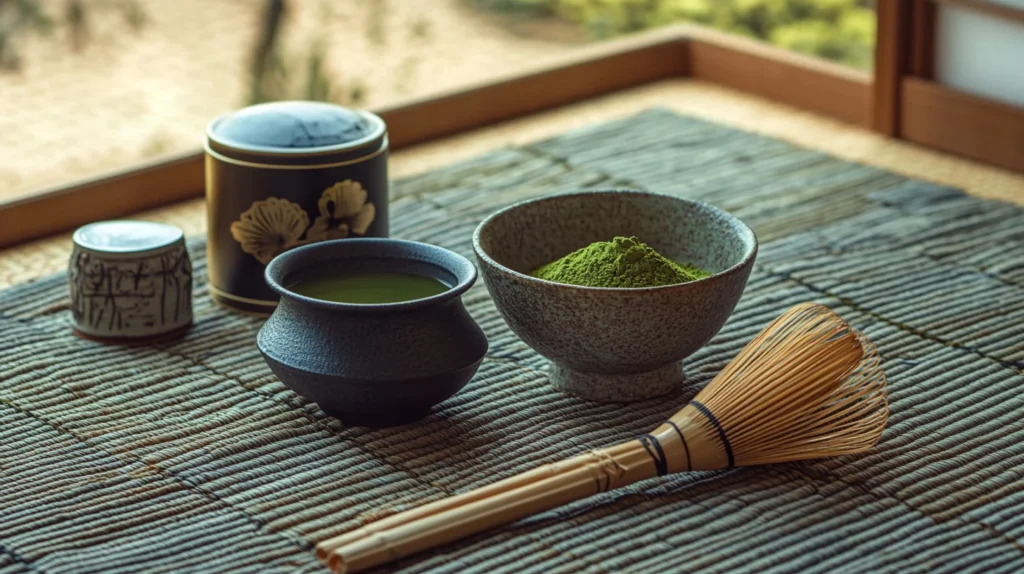
FAQs About Matcha Pan and Matcha in General
Is it safe to drink matcha on a daily basis?
Yes, drinking matcha every day is generally safe for most people when consumed in moderation. Due to its high antioxidant content and lower caffeine level compared to coffee, daily matcha can be a healthy addition to your routine. However, it’s best to stick to 1–2 servings per day to avoid potential side effects from excessive caffeine or tannin intake.
How does drinking matcha affect the body?
Matcha has numerous positive effects on the body. It is rich in catechins, particularly EGCG, which have powerful antioxidant properties. Drinking matcha may help boost metabolism, enhance brain function, improve focus, support heart health, and detoxify the body. Thanks to its combination of L-theanine and caffeine, matcha also provides calm, sustained energy without the crash.
What are the traditional tools used to prepare matcha?
Preparing matcha the traditional way involves a few specific tools:
Chasen (bamboo whisk): Used to froth and blend the matcha powder with hot water.
Chawan (tea bowl): A wide bowl for whisking and drinking matcha.
Chashaku (bamboo scoop): A small, curved scoop for measuring the perfect amount of matcha powder.
Natsume or Chaki (matcha container): A container used to store matcha powder.
These tools are essential in the Japanese tea ceremony and enhance the ritual and flavor of the matcha experience.
Can drinking matcha help reduce belly fat?
Matcha may assist in burning fat, including abdominal fat, as part of a balanced diet and healthy lifestyle. The EGCG antioxidants and natural caffeine in matcha are known to support increased fat oxidation and metabolism, particularly during exercise. While it’s not a miracle solution, regular matcha consumption combined with proper nutrition and physical activity can contribute to weight management and fat reduction.
Conclusion
Matcha Pan is far more than a trendy green bun—it’s a rich tapestry of tradition, flavor, and modern innovation. From its roots in Japan’s centuries-old tea culture to its growing presence in bakeries across the globe, this matcha-infused bread is a perfect example of how food can evolve while still honoring its origins.
Its vibrant color, soft texture, and deep, earthy flavor make Matcha Pan an experience for all senses. Whether enjoyed plain or filled with sweet red bean paste, creamy custard, or rich white chocolate, it delivers a uniquely satisfying taste that lingers. For those who enjoy baking, the homemade version offers not just freshness but creative freedom—giving you the chance to try different fillings, shapes, and styles.
Moreover, Matcha Pan brings with it a nutritional edge, thanks to matcha’s powerful antioxidants, L-theanine, and metabolism-boosting compounds. It’s not just delicious—it’s a mindful indulgence.
In an age where people are seeking foods that are both comforting and health-conscious, Matcha Pan ticks all the right boxes. Whether you’re a matcha enthusiast, a foodie, or a curious home baker, trying this iconic Japanese treat is a must.
So, next time you’re craving something special, reach for Matcha Pan—a bite-sized blend of history, health, and harmony.
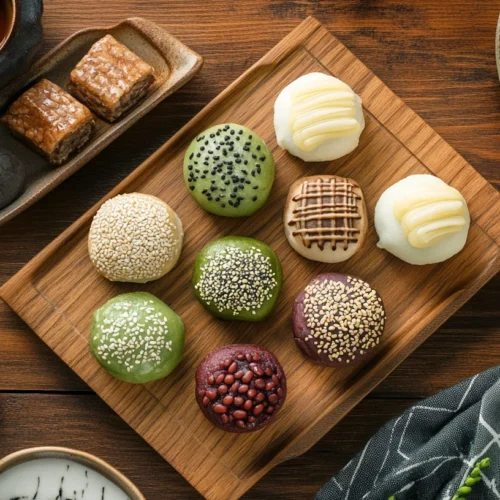
Soft & Fluffy Matcha Pan (Japanese Green Tea Bread)
Equipment
- Mixing bowls
- Whisk
- Stand mixer with dough hook (or hand mixer + manual kneading)
- Digital kitchen scale
- Plastic wrap or clean towel
- Dough scraper
- Pastry brush
- Parchment-lined baking tray
- Oven
Ingredients
- For the Dough:
- 250 g bread flour
- 2 tbsp culinary-grade matcha powder
- 40 g granulated sugar
- 1 tsp salt
- 5 g instant dry yeast
- 180 ml warm whole milk about 35°C
- 30 g unsalted butter softened
- Optional Fillings:
- 100 g sweet red bean paste anko
- White chocolate chunks
- Cream cheese or custard
- Toppings optional:
- White or black sesame seeds
- Powdered sugar
- Crumb topping for melon pan style
Instructions
- Mix Dry Ingredients
- In a large bowl, whisk together bread flour, matcha powder, sugar, and salt.
- Activate Yeast
- In a separate bowl, dissolve yeast in warm milk. Let sit for 5–10 minutes until slightly foamy.
- Combine Ingredients
- Pour the yeast mixture into the dry ingredients. Mix until a rough dough forms.
- Knead Dough
- Knead by hand for 10–15 minutes or with a mixer for 8 minutes. Add softened butter halfway and knead until smooth and elastic.
- First Rise
- Place dough in a greased bowl. Cover and let rise in a warm place for 1–1.5 hours or until doubled in size.
- Shape Dough
- Punch down and divide into 8 equal portions. Flatten each, add desired filling, seal, and roll into smooth buns.
- Second Rise
- Place buns on a parchment-lined tray. Cover and let rise again for 30–45 minutes.
- Preheat Oven
- Preheat oven to 180°C (350°F). Brush buns with milk or egg wash for shine. Add sesame seeds if desired.
- Bake
- Bake for 15–18 minutes until lightly golden. Cool on a wire rack before serving.
